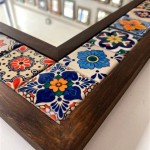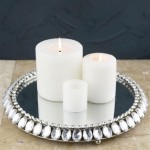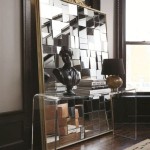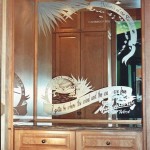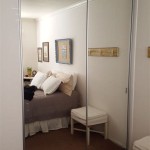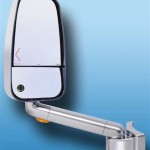The Mirror: Reflections of Identity and Society
The mirror, a seemingly simple object, has played a profound role in human history and culture. From its earliest iterations as polished stones and reflective surfaces to the intricate, technologically advanced mirrors of today, its significance extends far beyond simply reflecting our physical form. The mirror acts as a conduit for self-discovery, societal reflection, and artistic expression. It offers a window into our innermost selves and the world around us, prompting questions about identity, perception, and the very nature of reality.
The Mirror as a Tool for Self-Discovery
The mirror plays a fundamental role in the development of our sense of self. From infancy, we begin to recognize ourselves in reflections, marking a crucial step in establishing a separate identity. As we grow older, we use mirrors to scrutinize our physical appearance, shaping our self-image and influencing our confidence and self-esteem. The mirror serves as a constant companion, allowing us to observe both our inner and outer transformations throughout life. It becomes a tool for self-reflection, prompting us to contemplate our values, beliefs, and goals.
Beyond the physical, the mirror can also serve as a portal to our emotional landscape. Gazing into a mirror can evoke a range of emotions, from introspection and self-acceptance to anxiety and insecurity. These reflections can spark self-awareness, fostering a deeper understanding of our complex emotional experiences. The mirror becomes a space for exploring our vulnerabilities, strengths, and the multifaceted nature of our being.
The Mirror as a Reflection of Society
The mirror, as a symbol of objectivity, has often been used to reflect and critique societal norms, values, and power structures. From the Renaissance, where mirrors adorned the halls of the elite, to the modern era, where we encounter mirrors in countless public and private spaces, they serve as a lens through which we perceive societal trends and ideals. The way mirrors are depicted in art, literature, and popular culture speaks volumes about prevailing cultural values and the changing role of the individual within society.
The use of mirrors in advertising and media further highlights their role in shaping societal ideals and influencing consumer behavior. Through the portrayal of idealized images and the manipulation of light and reflection, mirrors can be used to sell products, promote certain lifestyles, and reinforce prevailing beauty standards. This raises important questions about the influence of media on self-perception and the potential for mirrors to be used as tools of manipulation and control.
The Mirror in Art and Creativity
Throughout history, artists have been fascinated by the power and ambiguity of the mirror. Painters, sculptors, and photographers have incorporated mirrors into their works to explore themes of identity, illusion, reality, and mortality. The mirror becomes a tool for artistic exploration, offering infinite possibilities for manipulation and interpretation.
From the ethereal reflections in Renaissance paintings to the fragmented images in modern art, the mirror has been used to challenge the viewer's perception and question the very nature of what is seen. These reflections, often distorted or fragmented, create a sense of depth and mystery, prompting the viewer to engage with the work on a deeper level. The mirror, in the hands of an artist, transcends its utilitarian purpose and becomes a powerful symbol of creativity and self-expression.

The Mirror Heart Of Britain

Crosswords Puzzles And Free Jumbles Mirror

Never Miss Out On Saving Money With Mirror Discounts March 2024

Mirror Co News Views Gossip Pictures The

Mirror Co News Views Gossip Pictures The

News Latest Stories Exclusives Opinion Ysis Mirror

Best Workout Mirrors 2024 Forbes Vetted

Mirror Review Cost Pros And Cons

4 Best Workout Mirrors In 2024 Tonal Vs Tempo Mirror Vault Garage Gym Reviews

Mirror Promo Code 200 Off Sitewide In March 2024

